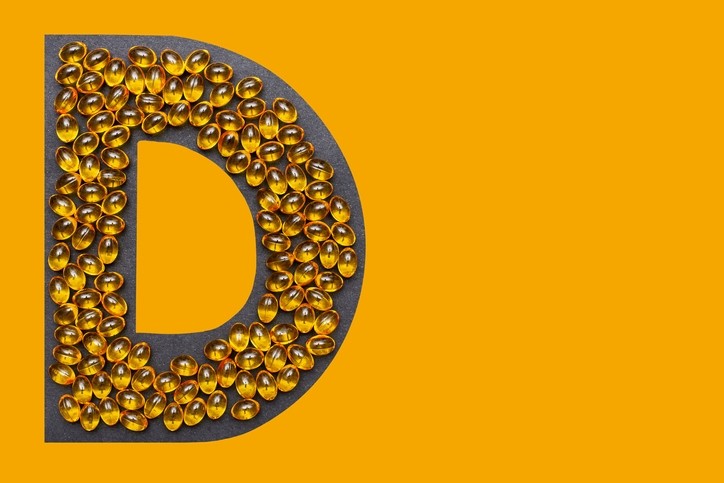Immunity concerns: More than half of Filipino children deficient or insufficient in vitamin D - new population data

This study was based on the 2018 National Nutrition Survey data (NNS 2018), funded by the Government of the Philippines.
A total 60.6% of Filipino children were found to have vitamin D deficiency (<50 μmol/L) and insufficiency (51–74 μmol/L).
Vitamin D, also known as the sunshine vitamin, is essential for bone growth, mental health and most recently, studied for its effect on COVID-19 immunity.
“This study revealed that there is a significantly high level of vitamin D insufficiency in children aged 6–12 years,” researchers wrote in the Journal of Nutrition and Metabolism.
“It is highly recommended to have outdoor activities and increase the vitamin D intake of school children to contribute to addressing stunting and improving immunity.”
Data collection
The study covered 789 children from the National Capital Region (NCR) of Manila City and Quezon City, Luzon (Cagayan Province and Baguio City), Visayas (Northern Samar and Siquijor), and Mindanao (Butuan City and Sultan Kudara).
Blood samples were collected from these children for the analysis of serum vitamin D through electrochemiluminescence binding assay (ECLIA). This was funded by Nestlé Philippines.
In addition, the study wanted to identify usual food sources of vitamin D intake for these children so a two-day non-consecutive 24-hour dietary recall was conducted face-to-face.
Urban vs rural
Children living in the urban NCR had the highest prevalence of deficiency (30.1%) and insufficiency (57.9%).
Other studies in Turkey and China also reported higher prevalence of vitamin D deficiency in urban areas.
NCR is a highly urbanised area and is the center of commerce, employment, and education. It has limited space, so people including children tend to spend more time indoors. Children tend to stay inside the house to play computer games or watch TV, according to researchers.
Gender differences
Between genders, girls (11.9%) had a higher prevalence of vitamin D insufficiency compared to boys (8.9%).
Researchers explained boys may have a higher sun exposure than girls due to more outdoor activities, as well as girls using more sunscreen when they are outdoors.
A study in UAE reported that females have lower vitamin D serum because of the higher subcutaneous fat in the body.
It has been hypothesised that subcutaneous fat could take up more vitamin D particles produced from the skin which could lead to lower vitamin D particles entering the blood circulation.
Food sources
For these Filipino children, the main food sources of vitamin D were fish, pork, and egg/egg dishes.
However, the average intake of vitamin D (2 μg/day) was found to be below the recommended intake of 5 μg/day for children.
The Institute of Medicine (IOM) recommends a daily vitamin D intake of 400 international units (IU) or 10 μg daily.
It has been reported that a daily intake of 1000 to 2000 IU is required to raise serum 25(OH)D to over 75 nmol/L (sufficient levels).
Serum 25-hydroxyvitamin D (25(OH)D) concentration is an indicator of vitamin D status.
A lack of vitamin D can cause bone weakening and prevent children from growing, which may be a cause to the country’s stunting problem.
In addition, with vitamin D increasingly studied in its role against COVID-19, increasing vitamin D intake or exposure to sunlight could be very beneficial to squash the cytokine storm occurring during the attack of COVID-19.
“Vitamin D is very important in enhancing the immune response of flu and previous coronaviruses because of its ability in suppressing cytokine production,” researchers explained.
With more than half of children in the Philippines have insufficient or deficient levels of vitamin D, researchers recommend more outdoor activities and increasing its intake among school children to address stunting and improve immunity.
The study is only limited to the comparison of vitamin D serum level in Filipino schoolchildren aged between six to 12 years. Variables such as the duration of sun exposure and time of the day during sun exposure were not evaluated.
The findings were similar to studies in Indonesia, where prevalence of vitamin D deficiency was 15% and insufficiency was 75.8%.
Source: Journal of Nutrition and Metabolism
https://doi.org/10.1155/2021/8515607
“Vitamin D Status and Usual Nutrient Intake of Filipino Children Aged 6–12 Years in Selected Areas in the Philippines: A 2018 National Nutrition Survey”
Authors: Imelda Angeles-Agdeppa and Keith V. Tanda













